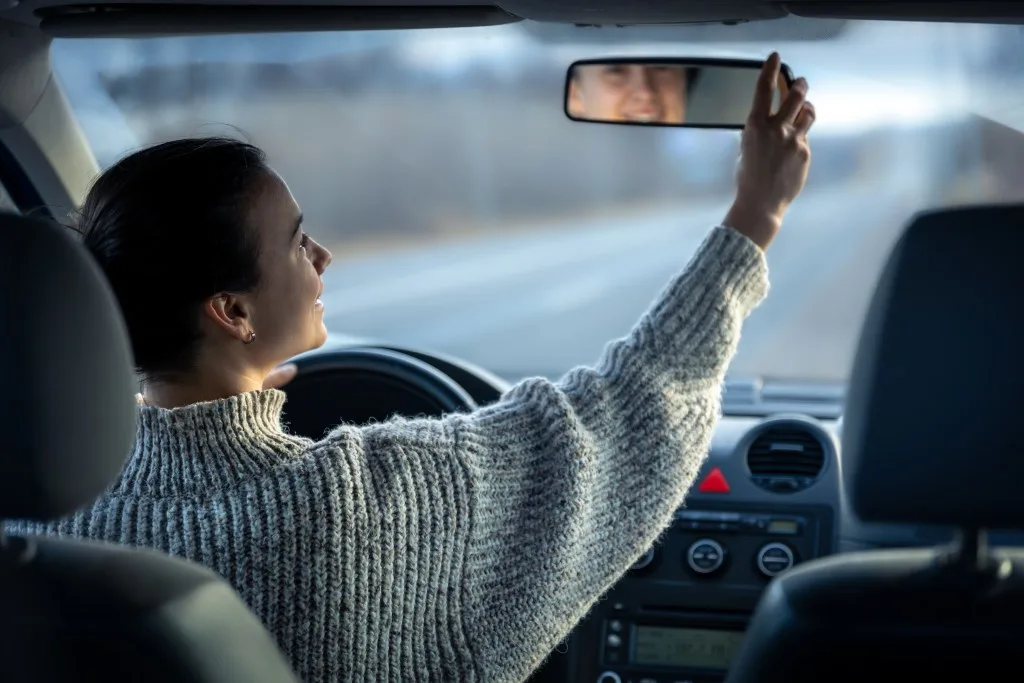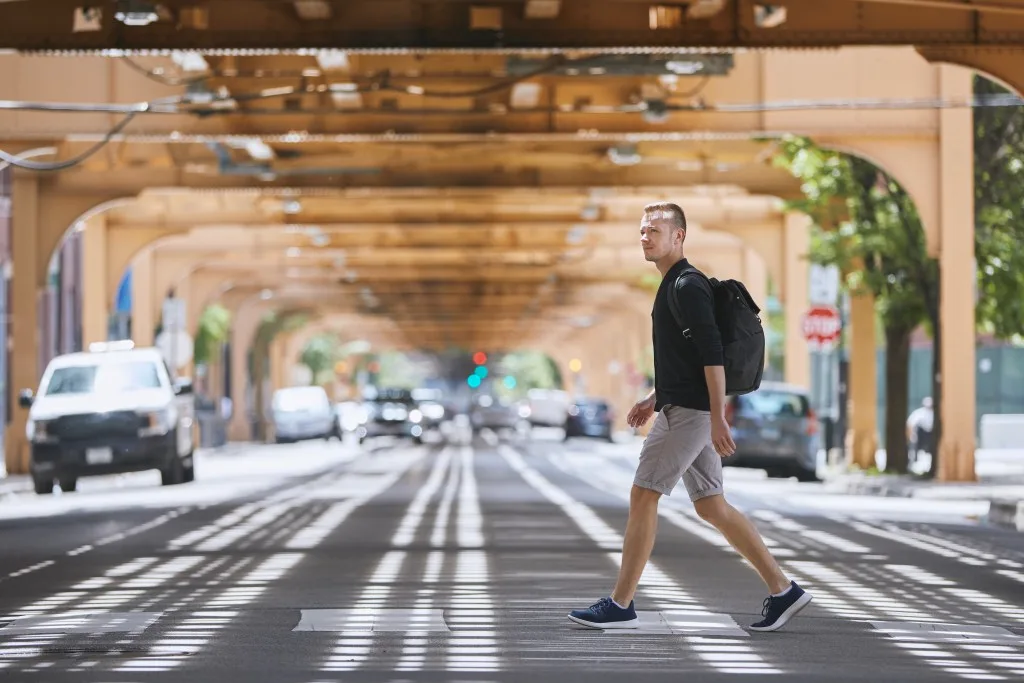Unlike a bottle of fine wine, some drivers don’t get better as they age. Once drivers get too comfortable on the road, they start breaking some basic driving rules that help keep them safe.
For many of us, it’s been a couple of decades since we last took a driver’s education course.
Today, we want to give a short refresher course on some basic driving rules you need to follow to be a good and safe driver. Buckle your seatbelt, adjust your mirrors, and let’s get started!

Which Traffic Violation Carries the Most Points Against Your License?
The number of points a violation carries varies by the state, but excessive speeding or reckless driving typically has the most points. This is usually when a driver exceeds the posted speed limit by 15 to 35 miles per hour, depending on the state.
If an officer catches you excessively speeding, there’s almost no chance you’ll talk your way out of a ticket. Some states even mandate that officers issue citations for excessively speeding drivers.
These can carry stiff penalties regarding points on your license. Depending on your speed, you could be looking at four to 11 points on your license. Many states will suspend or revoke your license once you reach 11 points.
Not only will you have your license suspended or revoked, but your insurance premiums will skyrocket.
Pro Tip: Make sure to avoid doing any of these 5 RV Driving Habits That Make People Instantly Dislike You.

10 Reasons You’re a Bad RV Driver
Consider this a quick and painless reminder to be a good driver and follow the basic driving rules. We’d rather be the ones to remind you of the importance of following these rules than for an officer to remind you as they hand you a citation. So keep your money in your pocket and follow these driving rules!
Not Wearing a Seat Belt
There were 23,824 passenger vehicle deaths in 2020. Of those deaths, 51% weren’t wearing their seat belts. While a seat belt may not have made a difference in all of these accidents, there’s no doubt it would have in some. Wearing your seat belt helps keep you safe and avoid a ticket.
Law enforcement will often look for drivers and passengers not wearing their seat belts as a reason to pull them over.
Tickets for not wearing a seat belt can range from $15 to $162. Not only will you have to pay the fine, but your insurance company could see you as a reckless driver and raise your monthly premium. Like the law enforcement campaign said for years, “Click it, or ticket.”
Distracted Driving
Distracted driving is nothing new, but substantial technological advancements have not helped drivers be less distracted. It’s nearly impossible to drive anywhere and not see a driver trying to multitask by driving their vehicle at 70 miles per hour while checking their email or replying to a text message.
Many states have instituted stiff penalties for drivers caught operating mobile devices while driving. However, it doesn’t seem to stop many drivers.
Some people are too addicted to their devices and underestimate how hazardous it can be to take their eyes off the road for a second or two while they check their DMs.
Speeding
Speeding is one driving rule that becomes easier to break with time. As you get more relaxed behind the wheel, you gradually increase the speed at which you’re comfortable driving. Before you know it, you regularly do 10 to 15 miles per hour over the speed limit.
You may get by most of the time, but getting caught just once by law enforcement will likely cost you a pretty penny.
In 2019, there were 50,930 drivers involved in 33,244 fatal crashes. The National Highway Traffic Safety Administration stated that 17% of the drivers in these accidents were speeding, and 26% were in speed-related crashes. Slowing down may mean you arrive late, but at least you’ll arrive alive.

Not Driving for Conditions
Experience can create a false sense of confidence in a driver and their abilities to drive in poor conditions. Adjusting your speed and driving habits for road conditions is an essential rule, and many bad drivers don’t follow it. To be a good and safe driver, be mindful of the weather and road conditions while on the road.
If the road becomes slick, covered in water, or the weather reduces visibility, ensure your lights are on and slow down. Be aware of other drivers and where they are around your vehicle. Many drivers will turn off the radio to help them concentrate.
Don’t be afraid to find a safe place to pull over if the conditions become too dangerous.
Following Too Closely
No matter what day of the week, we all eventually find ourselves stuck behind someone on a Sunday drive. They’re not in a hurry and slow us down. Many poor drivers errantly believe that getting as close as possible behind a vehicle will encourage them to increase their speed. However, many drivers who see cars following too closely behind them will have the opposite reaction. They’ll slow down even more.
Law enforcement can and will pull over a driver following the vehicle in front of them too closely.
It can be frustrating to go 50 in a 55, but do yourself a favor and keep plenty of distance between you and the other vehicle. Maybe 50 is the maximum speed they feel comfortable driving. You don’t want to put them in danger by pressuring them to exceed their comfort level. Following too closely may make them nervous and cause them to make bad decisions.
Running a Red Light
One of the biggest fears of any new driver is running a red light. They’ll often be overly cautious when approaching a yellow light and slow down or stop when there is plenty of time to make it through the intersection safely.
However, as drivers gain experience and confidence, they push the legal limits regarding running a red light.
Many cities have instituted red light cameras that will automatically monitor dangerous intersections with a reputation for drivers running the light. If you run one of these red lights, the cameras will take a picture of your vehicle and send you a ticket in the mail. It will be hard to fight a ticket when your face and car are in the picture.
Failing to Yield the Right of way (Including to Pedestrians)
One of the most fundamental driving rules is knowing when to yield the right of way to other drivers. Drivers often get in too much of a hurry to wait or move out of the way for other vehicles. Sadly, this can cause accidents, which will cost drivers money and cause them to lose more time than if they had yielded in the first place.
Some drivers forget that pedestrians have the right of way in many situations, especially at crosswalks and parking lots.
Drivers often ignore the signs reminding them that yielding to pedestrians is the law. Be a good driver and watch for pedestrians attempting to cross a road or parking lot safely.

Not Using Turn Signal
You can fail your driver’s license test for not using your turn signal. If drivers could lose their license for not using their turn signal when making a turn, we’d have much fewer drivers on the road. Sadly, that’s not the case, and many drivers become lazy when communicating their intent to turn.
Be a good driver and communicate your intent to turn or change lanes for those driving around you. You may find people are more courteous and will make room for you to change lanes. Treat others as you wish to be treated, including using your turn signal.
Riding in the Left Lane
The left lane isn’t for cruising; it’s for passing. Many states have strict laws regarding drivers riding in the left lane. The left lane should be open unless you’re actively passing another vehicle. Law enforcement can issue a citation to a driver for riding in the left lane and hindering traffic flow.
Because laws vary between states, the legalities change depending on the state. However, while it may not be illegal, it isn’t polite in all 50 states to ride in the left lane.
So unless you want to be an inconsiderate driver, don’t ride in the left lane and hold up traffic.
Driving Without Documentation
You should always have specific documentation when driving a vehicle. Law enforcement will ask to see your license, registration, and proof of insurance if they pull you over. If you cannot produce these for them, there’s a chance you’re getting a ticket. It’s best to store your registration and proof of insurance in your vehicle’s glove box.
Ensure you replace it with the updated version whenever your insurance provider sends you a new copy. An expired proof of insurance or registration will typically not suffice if law enforcement pulls you over.
Pro Tip: Before you potentially break the law, find out Is It Legal to Drive With Headphones?
If You Want to Be a Good Driver, Obey These Basic Driving Rules
Being a good driver means following the rules of the road. Focusing on being a competent driver is less about how fast you get there and more about arriving safely. You may lose a few minutes by obeying these laws, but you’ll make up for it by staying safe. Be the best driver you can and follow these basic driving rules!
What are some driving rules you see other drivers break the most? Tell us in the comments!
Discover the Best Free Camping Across the USA
To be honest with you, we hate paying for camping. There are so many free campsites in America (with complete privacy).
You should give it a try!
As a matter of fact, these free campsites are yours. Every time you pay federal taxes, you’re contributing to these lands.
Become a FREE CAMPING INSIDER and join the 100,000 campers that love to score the best site!
We’ll send you the 50 Best Free Campsites in the USA (one per state). Access the list by submitting your email below: